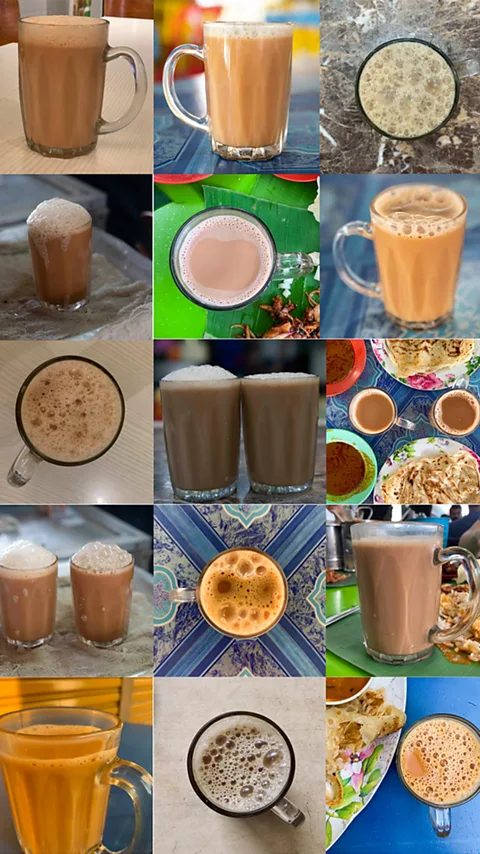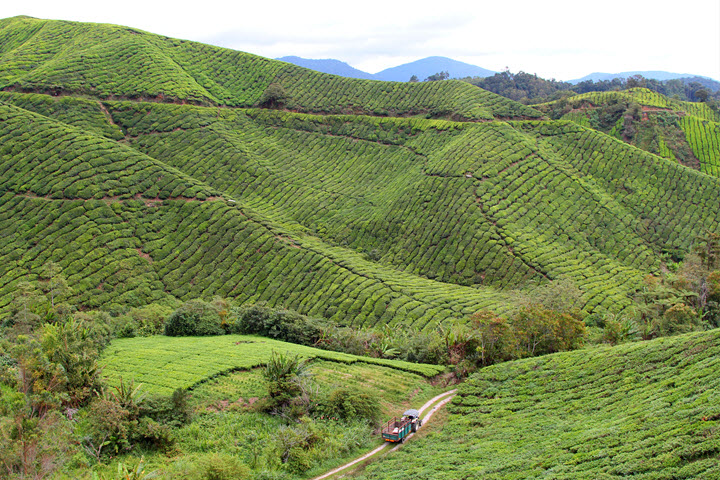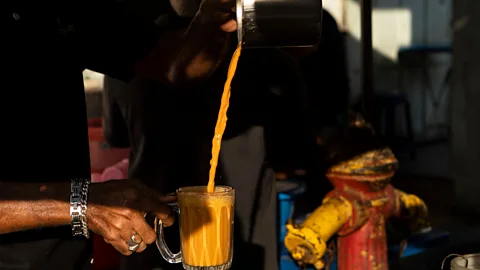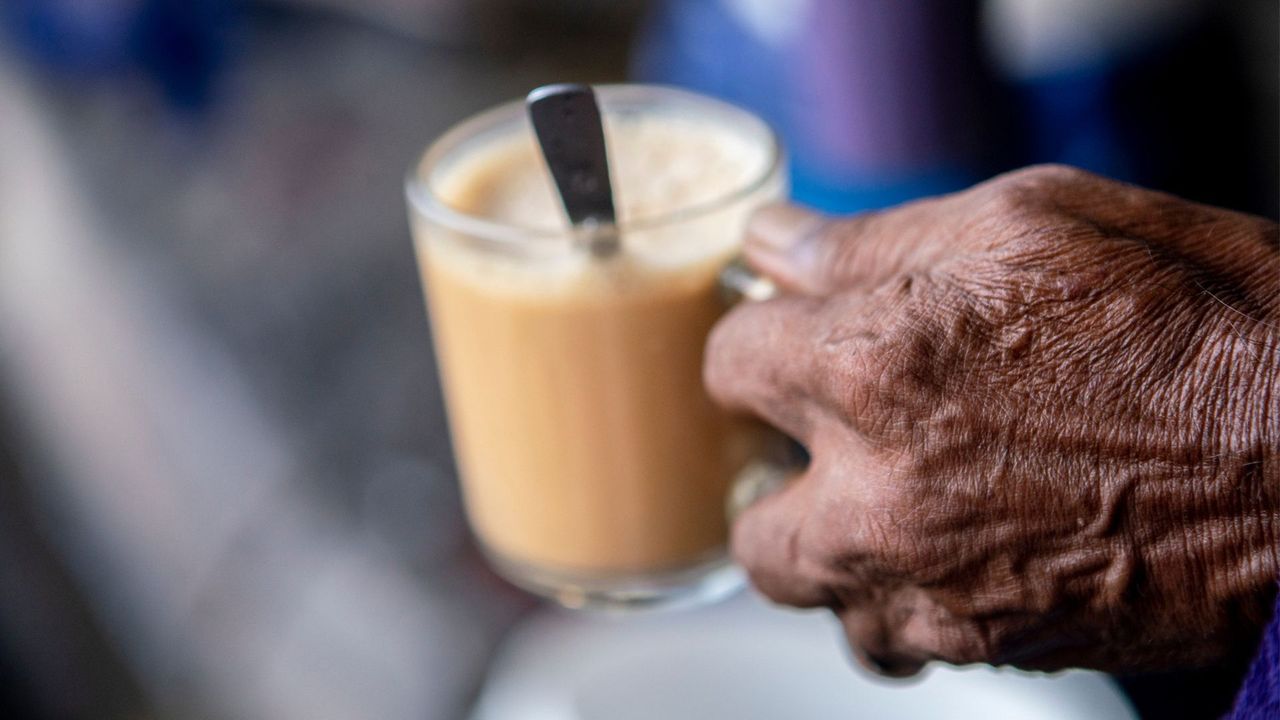Malaysian Tea Culture: A Guide

Introduction
Overview of Malaysian Tea Culture
Malaysian tea culture is a vibrant fusion of local traditions and colonial influences, characterized by a deep appreciation for tea drinking as an everyday ritual. The country boasts lush landscapes that nurture various tea plantations, each contributing unique flavors to the nation’s beverage repertoire.
- Key components of Malaysian tea culture include:
- Diverse tea varieties: Including black, green, and herbal teas.
- Traditional tea houses: Offering a cozy ambiance to enjoy a cup with friends.
- Culinary pairings: Often enjoyed with local snacks like kuih.
Significance of Tea in Malaysian Tradition
In Malaysia, tea is much more than a beverage; it is a symbol of hospitality and warmth. Serving tea to guests is a customary practice, reflecting respect and friendship. Anecdotes shared over a steaming cup strengthen relationships, making tea an essential part of social interactions.
Consider visiting a traditional tea house where conversations unfold, laughter resonates, and aromatic tea brews serve as a backdrop to cherished memories. This communal experience propels Malaysian tea beyond the glass, embedding it deeply in the nation’s heart and history.

History of Tea in Malaysia
Origin and Evolution of Malaysian Tea Industry
The roots of the Malaysian tea industry trace back to the late 19th century, influenced primarily by the country’s rich climatic conditions perfect for tea cultivation. Initially introduced as a cash crop, tea farming evolved into a significant agricultural sector, with lush green hills becoming synonymous with Malaysian tea.
- Key milestones in Malaysian tea history:
- First Tea Plantations (1929): The establishment of the first commercial tea estate in the Cameron Highlands marked a new era.
- Diverse Cultivation: Over the years, various tea varieties were cultivated, adapting to local tastes while maintaining global standards.
Influence of British Tea Plantations
The British colonial period played a pivotal role in shaping Malaysia’s tea narrative. British settlers established extensive plantations, leading to innovations in tea processing and cultivation techniques. This influence helped put Malaysia on the global tea map.
For example, during a visit to the Cameron Highlands, one can still witness remnants of the colonial era, with tea estates that boast century-old practices. These plantations, such as BOH Tea, encapsulate the rich history and evolution of Malaysian tea, showcasing how British influence has left an indelible mark on this beloved beverage.
- Notable contributions of British colonization:
- Introduction of Western tea processing methods.
- Development of a skilled workforce through local employment opportunities.
This blend of history and tradition continues to thrive, with Malaysian tea remaining a celebrated staple in both local and international communities.
:max_bytes(150000):strip_icc()/20231026-TehTarik-MichelleYip-10-d25cea0e164c4da3b02b8bd589b4a248.jpg)
Types of Malaysian Tea
Popular Varieties of Malaysian Tea
As Malaysia’s tea culture flourished, so did its array of tea varieties, each boasting a unique identity shaped by geography and craftsmanship. Among the most revered are:
- Cameron Highlands Tea: Known for its crisp flavor and vibrant aroma, it’s a favorite for both locals and tourists.
- Boh Tea: A leading brand, it offers a robust taste that has become synonymous with Malaysian tea experiences.
- Sipping Herbs: Herbal varieties, such as ginger tea and lemongrass tea, are gaining widespread popularity for their refreshing qualities.
Each of these varieties serves as a canvas for the rich agricultural landscapes, presenting a microcosm of Malaysian culture and tradition.
Unique Flavors and Characteristics
Diving deeper into the flavors, Malaysian tea is celebrated for its distinctive taste profiles that cater to diverse palates.
For instance, while Boh Tea provides a strong, bold flavor profile ideal for pairing with condensed milk, Cameron Highlands Tea offers a lighter, floral note, making it perfect for afternoon sipping.
- Flavor Highlights:
- Robust and Strong: Perfect for those who enjoy a traditional straightforward tea experience.
- Floral and Fragrant: Appeals to those seeking subtler, more nuanced tastes.
- Herbal Infusions: Bring health benefits along with unique flavor twists.
During a casual afternoon tea session, one might find a mix of these varieties on the table, each inviting lively conversation and a unique sensory experience. This delightful range not only showcases the craftsmanship behind Malaysian tea but also emphasizes the rich diversity inherent in its tea culture, as each cup tells a story of its origin and artistry.

Tea Drinking Customs in Malaysia
Traditional Tea Ceremonies
Tea drinking customs in Malaysia reflect a beautiful tapestry of cultural influences, particularly highlighted in traditional tea ceremonies. These ceremonies are often an integral part of gatherings, showcasing the hospitality and warmth inherent in Malaysian culture.
- Elements of Traditional Tea Ceremonies:
- Preparation: The tea leaves are brewed meticulously to capture their authentic flavors.
- Serving Rituals: It’s customary to serve tea in small cups, encouraging guests to appreciate each sip.
- Accompaniments: Local snacks, like kuih, often accompany the tea, enhancing the sensory experience.
During my visit to a family gathering, the act of serving tea quickly transformed a simple meal into a cherished memory, as laughter and stories flowed as freely as the tea.
Modern Tea Consumption Trends
As Malaysia embraces modernity, tea consumption has also evolved, blending traditional practices with contemporary twists. Today, tea drinking is no longer limited to formal ceremonies but is a daily ritual enjoyed by many in various settings.
- Current Trends in Malaysia:
- Bubble Tea Craze: The global trend of bubble tea has taken Malaysia by storm, attracting younger audiences excited by new textures and flavors.
- Artisan Tea Blends: Specialty tea shops are popping up, offering unique blends and brewing techniques, appealing to health-conscious consumers.
This blend of tradition and innovation creates a vibrant tea culture where both elderly and younger generations can enjoy, fostering a sense of community and connection through shared love for this timeless beverage. Whether savoring a classic brew or indulging in the latest trend, the essence of Malaysian tea culture continues to flourish.

Tea Production in Malaysia
Regions where Tea is Cultivated
When it comes to tea production, Malaysia boasts several key regions that have become synonymous with premium tea cultivation. Nestled within lush highlands, these areas provide the perfect conditions for developing exquisite flavor profiles.
- Notable Tea-Cultivating Regions:
- Cameron Highlands: Renowned for its misty climate and rich soil, it produces some of the country’s finest black and green teas.
- Borneo’s Highlands: Offers a unique array of teas with earthy flavors, influenced by its diverse ecosystem.
- Perak and Pahang: These states have also begun to cultivate tea, expanding Malaysia’s contribution to the global tea market.
During a recent trip to the Cameron Highlands, the breathtaking views of sprawling tea plantations intertwined with the cool, crisp air made the experience unforgettable, allowing one to appreciate the dedication behind each cup.
Tea Harvesting and Processing Techniques
The journey from tea leaves to the final brew involves meticulous harvesting and processing methods, each step essential in shaping the tea’s flavor and quality.
- Harvesting Techniques:
- Hand-Picking: Skilled workers hand-pick tender leaves, ensuring only the best quality reaches the processing stage.
- Selective Picking: Only the top two leaves and the bud are harvested for premium grades, showcasing the dedication to quality.
- Processing Steps:
- Withering: Leaves are laid out to reduce moisture, enhancing their flavor.
- Rolling: Leaves are rolled to break the cell walls, releasing essential oils.
- Oxidation: Depending on the desired type (black or green tea), leaves are oxidized to develop unique flavors.
- Drying: Finally, leaves are dried to lock in their characteristics, ready for packaging.
Witnessing these intricate processes firsthand at a local plantation highlighted the craftsmanship involved, transforming simple leaves into the delightful tea enjoyed worldwide. This attention to detail not only enhances the quality of Malaysian teas but also supports the country’s rich agricultural heritage.

Malaysian Tea Culture and Social Customs
Tea as a Symbol of Hospitality
In Malaysian culture, tea is much more than a drink; it embodies hospitality and community spirit. When guests arrive, offering tea is a time-honored tradition that showcases warmth and welcome.
- Cultural Elements:
- Immediate Offerings: Visitors are often greeted with a fresh brew, reflecting the host’s eagerness to make them feel at home.
- Casual Gatherings: Family and friends often come together over tea, establishing a relaxed atmosphere for conversation.
During a delightful visit to a Malaysian friend’s home, the moment I was handed a steaming cup of tea signaled not only hospitality but also the start of heartfelt conversations that lasted for hours.
Tea as a Sign of Respect and Friendship
The act of sharing tea transcends mere hospitality; it represents deep respect and camaraderie among friends and family. In various social situations, offering tea is seen as a gesture of goodwill.
- Friendship Rituals:
- Building Bonds: Sharing tea encourages openness, allowing friendships to flourish in a comfortable setting.
- Celebrating Occasions: Whether it’s a celebration or a humble gathering, tea plays a central role in marking shared experiences.
At a casual tea party hosted for friends, the conversation flowed as freely as the tea, illustrating how this simple beverage fosters connection and strengthens relationships. In Malaysian society, each sip not only quenches thirst but also helps create enduring friendships built on mutual respect and understanding. This vital aspect of Malaysian tea culture encapsulates the heart of social interactions, reminding us of the ties that bind us.

Health Benefits of Malaysian Tea
Nutritional Value of Malaysian Tea
Malaysian tea not only tantalizes the taste buds but also offers a wealth of nutritional benefits. Each sip brings with it essential nutrients that contribute to overall well-being.
- Key Nutritional Highlights:
- Antioxidants: Rich in flavonoids, Malaysian tea helps combat oxidative stress.
- Vitamins: Varieties like green tea offer a dose of vitamin C and other essential nutrients.
- Lower Calorie Option: Unsweetened tea is a low-calorie beverage choice, perfect for those monitoring their weight.
During a recent wellness retreat, my morning ritual of enjoying a cup of aromatic green tea left me feeling refreshed and energized, highlighting its role not just as a beverage but as a nutritional ally.
Medicinal Properties and Herbal Infusions
In addition to its nutritional value, Malaysian tea is lauded for its medicinal properties, especially in the realm of herbal infusions. Many local blends are crafted not only for flavor but for their health benefits.
- Popular Herbal Infusions:
- Ginger Tea: Known for its anti-inflammatory properties, it aids digestion and boosts immunity.
- Lemongrass Tea: Often enjoyed for its soothing effects, helping to relieve stress and anxiety.
- Roselle Tea: Packed with antioxidants, it is believed to lower blood pressure and improve heart health.
On a rainy afternoon, I savored a cup of ginger tea, relishing its warmth and therapeutic properties, which made it an ideal remedy for the chill. These healthful aspects of Malaysian tea reinforce its significance, seamlessly blending tradition with wellness, and encouraging a lifestyle that promotes both enjoyment and health. Incorporating these brews into daily life not only enhances one’s tea experience but also supports a holistic approach to well-being.

Tea Tourism in Malaysia
Visiting Tea Plantations and Tea Houses
Tea tourism in Malaysia offers a unique opportunity to explore the lush landscapes while indulging in the delightful world of tea. Visiting tea plantations allows travelers to witness the entire journey from leaf to cup.
- Top Destinations:
- Boh Tea Plantation: This iconic spot in the Cameron Highlands provides stunning views and guided tours that reveal the tea-making process.
- Genting Highlands: Known for its scenic tea estates, the area features charming tea houses where visitors can sip their brews while soaking in breathtaking surroundings.
During one particular visit to Boh Tea Plantation, I was captivated by the mesmerizing rows of tea bushes, and the knowledgeable guide shared fascinating details about the cultivation and processing methods, making the experience unforgettable.
Tea Tasting and Experiential Activities
Engaging in tea tasting sessions and experiential activities enhances the overall itinerary for tea enthusiasts. These experiences allow visitors to appreciate the intricate flavors inherent in different teas.
- Tea Experiences to Explore:
- Tea Tasting Workshops: Participants learn about aroma, flavor notes, and the brewing process as they sample various blends.
- Culinary Pairings: Some tours offer sessions where local delicacies are paired with different types of tea, enhancing the tasting experience.
- DIY Tea Blending: Workshops allow guests to create their own unique blends, fostering creativity and a personal connection to their tea journey.
I vividly recall my first tea tasting session, where I savored the nuances of different brews while learning how to identify their flavors—a true delight for the senses. This immersive malaysian tea tourism experience not only deepens one’s appreciation for the beverage but also creates lasting memories that reflect the rich culture surrounding Malaysian tea, inviting both local and international visitors to partake in this wonderful journey.

Sustainability Practices in Malaysian Tea Industry
Environmental Conservation Efforts
The Malaysian tea industry is becoming increasingly aware of its environmental responsibilities, implementing various conservation efforts aimed at protecting the delicate ecosystems surrounding tea plantations. These initiatives ensure that tea production does not come at the cost of natural heritage.
- Key Conservation Practices:
- Organic Farming: Many plantations have shifted to organic practices, minimizing synthetic pesticides and fertilizers to protect soil health.
- Water Management: Efficient irrigation systems are being developed to conserve water resources and maintain the health of the tea bushes.
- Biodiversity Enhancement: Plantations are incorporating native flora and fauna in their fields, creating a balanced ecosystem that supports local wildlife.
On a visit to a tea estate focused on sustainable practices, I was amazed by the visible efforts made to restore biodiversity, showcasing how harmony can exist between agriculture and nature.
Ethical Tea Production and Fair Trade
Alongside environmental efforts, ethical tea production and fair trade practices are gaining traction in Malaysia. Many tea producers recognize the importance of fair treatment for workers and the community, fostering a sustainable business model that supports both people and the planet.
- Key Fair Trade Practices:
- Fair Wages: Promoting fair compensation for plantation workers to ensure a decent standard of living.
- Community Investments: Many plantations reinvest profits into local communities, supporting education, healthcare, and infrastructure.
- Transparency: Producers are increasingly adopting transparent practices that allow consumers to trace the origins of their tea, fostering informed purchasing decisions.
During a recent conversation with a local producer, I learned about the positive impacts of fair trade on the community, deepening my appreciation for every cup of tea I enjoyed. This commitment to ethical sourcing not only enriches the lives of those involved in the tea industry but also reassures consumers that they contribute to a larger movement toward sustainability and social responsibility. With each sip of Malaysian tea, one can savor not only its distinctive flavor but also the values embedded in its production.

Conclusion
Recap of Malaysian Tea Culture Highlights
Reflecting on the journey through Malaysian tea culture, we see how it is woven intricately into the fabric of everyday life. From the lush plantations in the Cameron Highlands to the hospitality practiced in homes, tea is a central figure in both tradition and modern social interactions.
- Key Highlights:
- The rich history intertwined with colonial influences and local practices.
- The diverse varieties of tea that celebrate Malaysia’s unique terroir.
- The significance of tea in fostering relationships and hospitality.
After experiencing a series of tea tastings and immersing myself in the culture firsthand, it’s clear that tea is not merely a drink but a cherished tradition that binds people together.
Appreciation for the Rich Tea Heritage
As we conclude this exploration of Malaysian tea, it’s essential to appreciate the heritage that underpins this beloved beverage. Every cup serves as a testament to the dedication of farmers, the beauty of the landscape, and the joyous moments shared among friends and family.
Understanding the sustainable practices being adopted and the ethical considerations at play further enriches this appreciation. With each sip of Malaysian tea, one is reminded not only of the robust flavors but also of the stories, nature, and communities behind it. This blend of history, culture, and sustainability ensures that Malaysian tea will continue to thrive, inviting new generations to savor its rich legacy.




